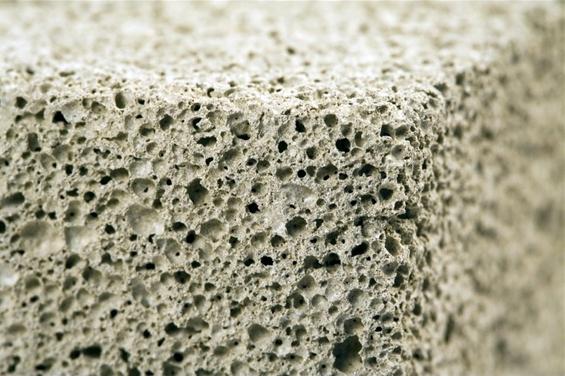What is the weight of 1 m3 of concrete
At present, like many centuries ago,Concrete remains, probably, the most common material for construction. It is used for a variety of construction works - from capital repairs to the erection of buildings. However, to perform any work, the first thing to do is to calculate the amount of material required, taking into account its characteristics. For example, before builders often there is a task to determine the weight of its cubic meter. Therefore, this article is devoted to the question of what is the weight of 1 m3 of concrete.

What determines the mass of concrete
First of all, it should be noted that the builders do notuse such concept, as "specific weight of concrete". This is due to the fact that this building material in its composition can contain a variety of components that have different weights.
So, as the filler can be used:
• The detritus.
• Gravel.
• Expanded clay and others.
Even if for the preparation of concrete solutionthe same composition is used, the weight of 1 m3 of concrete can be different in cases where the filler has different fractions. The larger the size of the fraction, the more voids in the material and, correspondingly, its smaller mass.
But builders are still interested in weightcharacteristics, since many parameters of the objects under execution depend on the value of this indicator. For example, based on these data, the calculation of the weight is performed and the type of foundations for different soil types is selected. The same applies to other load-bearing elements.
In practice, builders use the parameter forthe name "bulk weight". But this characteristic also does not have a constant value. In addition, the calculation should take into account the weight of the liquid used in the preparation of the solution.

Types of concrete
By the kind of binder this buildingthe material is divided into cement, silicate, slag-alkali, asphalt, etc. By appointment, ordinary concrete (for civil and industrial construction), special (road, decorative, heat-insulating, hydraulic) and special applications (chemically resistant, sound-absorbing, heat-resistant, for protection from nuclear radiation and others).
Characteristics of concrete
As the main indicator characterizingconcrete, the compressive strength is used. This characteristic defines the class of concrete marked with the letter "B" (Latin) and the numbers denoting (in kg / cm2) the permissible load. For example, the value of B25 indicates that this class of concrete is designed for a load of 25 kg / sq.cm. When calculating the strength of structures, the coefficients should be taken into account. Example: a construction of concrete class B25 with a coefficient of variation of 13.5 percent is capable of withstanding a load of 327 kg / sq.cm, which is equivalent to the M350 strength grade. The strength class B3.5 corresponds to the strength grade M50, B10 - M150, B30 - M400, and B60 - M800.
Other important indices of concrete includefrost resistance, bending strength and water resistance. Frost resistance is denoted by the letter "F" and a number from 50 to 500, meaning the number of transitions from freezing to thawing and back, which will withstand concrete. For the water resistance index, the letter "W" and the number from 2 to 12 are used, which indicates the water pressure that will withstand the sample of this concrete grade in the form of a cylinder.

Weight Determination
Reference data for the volumetric weight of concreteare defined in SNIP No. II-3. This standard indicates the estimated weight of concrete types, depending on the type of filler. It contains a table of the weight of concrete, from which you can find out that reinforced concrete products are characterized by a volume weight (in kg / m3) 2500, concrete with the use of filler in the form of gravel or crushed stone - 2400, expanded clay based on expanded clay sand - 500-1800, based on Perlite sand - 800-1000. In turn, aerated concrete is characterized by a bulk weight of 300-1000 kg / m3. Naturally, the weight of 1 m3 of concrete is approximate, but these data are quite suitable for design purposes. After all, the accuracy of data up to several kilograms can not provide any calculation.

Weight of concrete according to its brand
Builders often determine the weight of 1 m3 of concrete independing on the brand. Its heavy species are characterized by the following calculated data. The weight of M200 concrete is 2430 kg / m3. For the M100 grade, a value of 2495 kg / m3 can be used. The weight of concrete M300 is 2390, and for the M400 and M500 grades it is possible to take the values of 2375 and 2300 kg / m3, respectively.
Thus, quantitative quantities given in the article can be used for approximate engineering calculations in the manufacture of repair and construction works.
</ p>>





